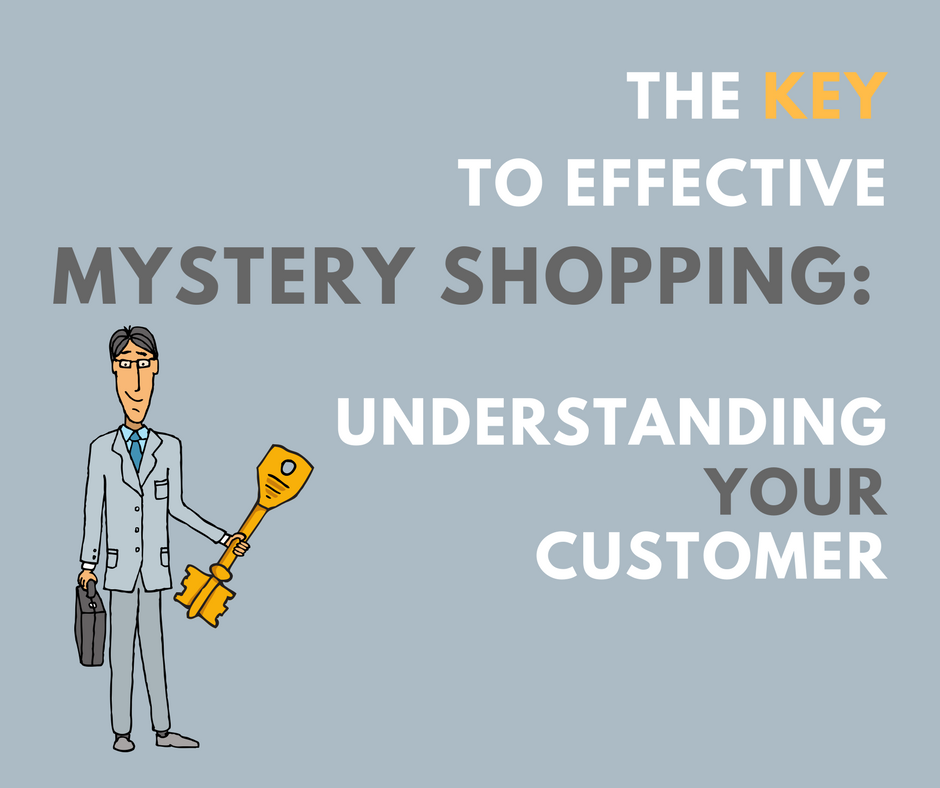The Key to Effective Mystery Shopping: Understanding Your Customer
Have you ever been in a situation where you ask a question only to receive an answer that isn’t what you were looking for? Maybe you didn’t ask the...

Guest Post by Annette Franz, CCXP
In a world with connected customers, personalized experiences, omnichannel, and the Amazon effect, brands must prioritize the customer experience now more than ever. Customer expectations have evolved and continue to evolve. Recent State of the Connected Customer research by Salesforce noted that 67% of customers say that their standards for good experiences are higher than ever, but 51% say most companies fall short of their expectations.
So, you’ve got to keep up with expectations in order to deliver the experience customers desire. If you don’t deliver that experience, customers will go elsewhere. PwC found that, in the US, 17% of customers would stop doing business with a brand they loved after just one bad experience; that number goes up to 32% globally. After several bad experiences, 59% will leave.
What’s a brand to do?
First and foremost, your executives must commit to defining and developing a customer-centric culture. It’s a critical foundational element of any customer experience transformation. But let’s assume that’s in place, and you’re well on your way to defining your customer experience strategy. Let’s focus on an important aspect of that strategy: customer understanding, and more specifically customer listening.
Customer listening is all about, well, just that: listening to your customers wherever they prefer to provide feedback (e.g., on social media or with your customer service reps) and asking them specific questions (e.g., via surveys). It’s also about tracking the crumbs of data that they leave behind as they interact with the brand.
As you might suspect, customer listening is fairly pervasive; an old Gartner statistic states that “95% of companies collect customer feedback, yet only 10% use the feedback to improve, and only 5% tell customers what they are doing in response to what they heard.” The latter part of this statistic hasn’t advanced much, which means that everyone’s listening, but few are acting on what they hear! But hold tight, there’s more to come on that.
About customer listening, let’s start at the beginning. Any project, program, or initiative must start with the end in mind: What are the objectives? Why are you doing it? And what are the desired outcomes?
Consider these questions: Why are you listening to your customers? Why do you want their feedback? Is it to meet an executive’s need to feed the metric, e.g., NPS, or is it truly to understand how well you’re performing against your customers’ expectations? Just know that if you’re listening to feed the metric then you’re doing things differently – and doing different things – than if you’re listening to understand the customer and how well you’re performing against her expectations.
Other questions to think about: What will you do with the data/feedback? How will you use it? Who owns each question in your surveys? How quickly can you make changes based on the feedback? Are you asking about things that you can actually change? Have you considered why you’re asking this question (for each question)?
These are all important considerations; if you don’t know the answers, then perhaps it’s a waste of customers’ time – and yours.
As you think about desired outcomes, you’ve got to consider outcomes for both the business and the customer. Some example outcomes for the business include increased revenue, increased retention, operational efficiencies/reduced costs, and culture change. Outcomes for the customer include reduced effort, increased satisfaction, expectations met, jobs complete, and an improved experience.
Next, you’ve got to define the various listening posts and data sources you’ll use to achieve those outcomes. That starts with having not just good data but also the right data.
There are a few different voices and data sources to consider as you establish your feedback program, including:
Other data sources include:
It’s great to be sitting on a goldmine of data, but data is just data until you do something with it. You’ve got to begin by analyzing it, teasing out the story, and then telling that story in such a way that the entire organization understands it and knows what to do with it.
First, you’ve got to identify what data is available and ensure that it’s all accessible, so you must inventory it and then centralize it. Data is useless to improving the customer experience when it remains siloed; siloed data means siloed experiences. You cannot deliver a personalized customer experience across your various channels if the data is housed in several disparate systems. Inventory the data and then centralize it in a data warehouse or data lake that affords access to those who need it. (I know none of this is a small task, but it’s important.) Now that you’ve got access to the data and can choose the data that you need, it’s time to analyze it. Analysis takes many forms.
You'll need a way to crosstab, predict, identify key drivers, and prioritize improvements with survey data; you’ve also got to mine and analyze your unstructured data for themes, sentiment, and emerging trends. You'll conduct various linkage analyses, linking customer and employee data, customer feedback with operational metrics, and all data to financial measures. And you'll need to conduct a root cause analysis to understand the why behind it all.
An important side note here: it’s time to evolve beyond the traditional descriptive analytics we’re all so familiar with and consider AI, machine learning, and predictive analytics to deliver a more proactive experience. Traditionally, companies were able to identify and prioritize improvement opportunities from their customer surveys via correlation or regression analysis and quadrant charts, which identify priority improvements, fundamental essentials, and things to continue doing. But in recent years, there's been an evolution from purely descriptive analytics (basic, summary statistics) to predictive analytics (predicting some future outcome based on what you know about the customer or on historical data) and prescriptive analytics, which takes that prediction and tells you why and then what to do, outlining the next best action to take in order to achieve a desired outcome.
Ah, action. That is the key to success of your customer experience strategy. I mentioned earlier with the Gartner statistic that there’s more to come on that topic, i.e., acting on the feedback. The next time you hear from me on this topic will be in a whitepaper that I’m working on for Intouch Insight titled, The What. The So What. The Now What. From CX Data to Outcomes – and Everything in Between! I’ll write about next steps from where I’ve just left off and explain how to go from data to outcomes. This will be important – no, actually, critical – to pay attention to. Too many brands listen but don’t act. But if you act, the benefits and the outcomes are real. Stay tuned for more details on the So What and the Now What. Can’t wait to share those with you!
 Annette Franz is the CEO of CX Journey Inc.
Annette Franz is the CEO of CX Journey Inc.
Annette Franz has 25 years of experience in both helping companies understand their employees and customers and identifying what drives retention, satisfaction, engagement, and the overall experience - so that, together, you can design a better experience for all constituents.

Have you ever been in a situation where you ask a question only to receive an answer that isn’t what you were looking for? Maybe you didn’t ask the...

Companies today have done a good job at listening and keeping a pulse on the voice of their customers (VoC). Whether it’s listening through social...

January and February are slow-moving months for consumers. People are scrambling to pay off their credit cards, don’t deny it Karen, we see you, and...